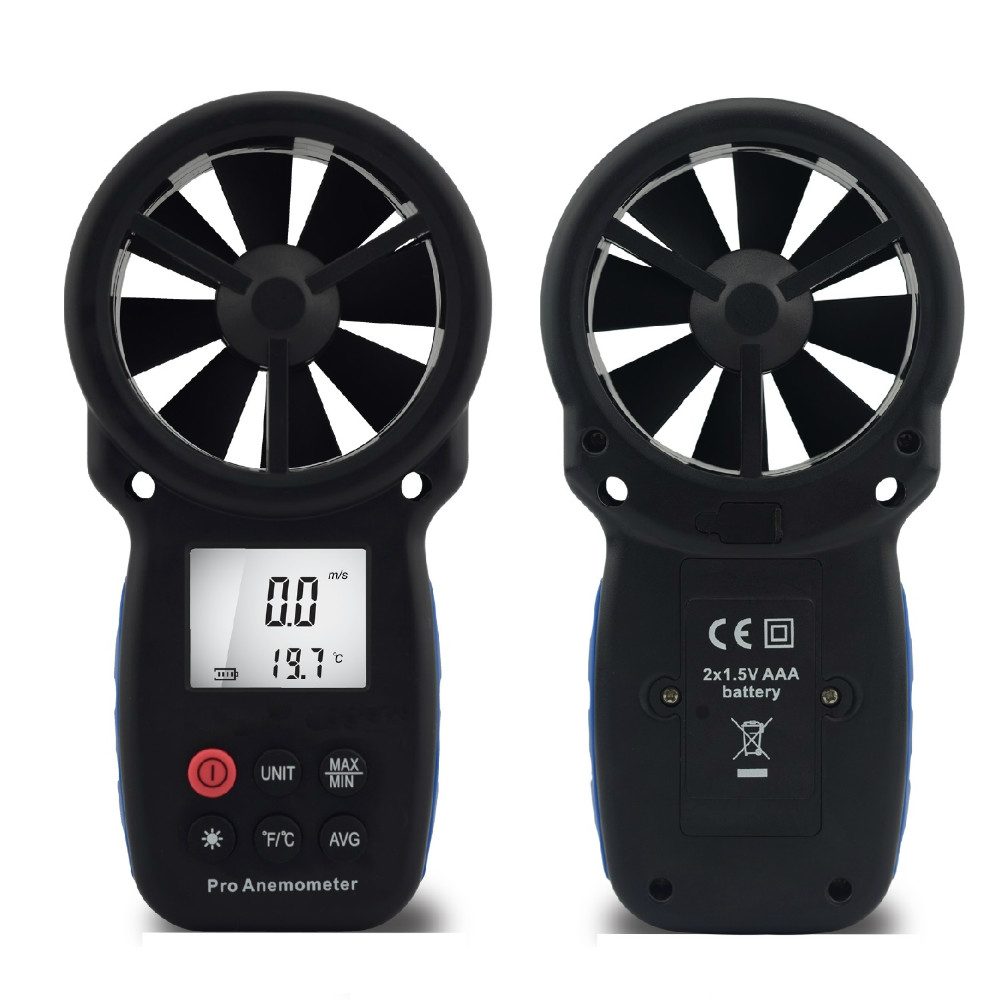Specialist Tips for Adjusting Your Anemometer for Optimum Efficiency
Specialist Tips for Adjusting Your Anemometer for Optimum Efficiency
Blog Article
All You Need to Know Concerning Anemometers: Just How They Work, Why They Matter, and Where to Use Them
Anemometers, however commonly forgotten in the world of scientific tools, play a critical role in various areas, offering beneficial understandings into wind rate and airflow patterns. Comprehending the technicians behind these gadgets is essential for anyone looking for to harness the power of this information. From meteorologists tracking weather patterns to designers creating structures with wind tons in mind, the applications of anemometers are significant and varied. As we explore the ins and outs of anemometer innovation, we will uncover the inner workings of these tools, their significance, and the essential factors to consider when selecting the appropriate anemometer for particular applications.

Anemometer Essentials
A crucial tool made use of to determine wind speed and direction, the anemometer plays a vital duty in weather forecasting and numerous sectors. An anemometer commonly is composed of 3 or 4 cups that rotate in the wind, a vane that directs right into the wind, and sensors to track the motions or turnings. By computing the turnings or movements over a details period, the anemometer can identify wind speed. The vane aids identify wind instructions by pointing right into the wind, supplying important information for climate projecting, aviation, maritime procedures, environmental monitoring, and wind power applications.
There are numerous sorts of anemometers offered, consisting of mug anemometers, vane anemometers, hot-wire anemometers, and sonic anemometers, each with its unique features and applications. Cup anemometers are frequently used for basic wind rate dimensions, while vane anemometers are liked for directional dimensions. Hot-wire anemometers are suitable for reduced airspeeds, and sonic anemometers are perfect for high-precision dimensions in research study and industrial setups. Recognizing the basics of anemometers is important for accurate wind data collection and evaluation throughout various markets.
Concepts of Anemometer Procedure
Structure on the fundamental understanding of anemometer fundamentals, the principles of anemometer procedure illuminate the auto mechanics behind wind speed and instructions dimensions. Mug anemometers, for circumstances, have three or even more mugs that catch the wind, triggering them to rotate much faster as the wind speed rises. Hot-wire anemometers depend on a heated cord that cools down as wind passes over it, with the rate of cooling determining the wind rate.
Significance of Anemometers
The value of anemometers in meteorology and numerous markets can not be overstated. Anemometers play a critical role in measuring wind speed and instructions, providing necessary information for weather condition forecasting, environment studies, ecological tracking, and aeronautics procedures. Meteorologists rely upon anemometers to gather accurate wind information, assisting them understand weather condition patterns, predict tornados, and problem prompt warnings to the public. In sectors such as building, farming, renewable resource, and maritime procedures, anemometers are made use of to optimize procedures, make sure safety and security, and raise efficiency. Wind ranch see here operators make use of anemometers to assess wind conditions and optimize electricity manufacturing from wind turbines. In the maritime field, anemometers aid ship navigating by giving real-time wind information to captains, helping them make notified decisions to make certain secure voyages. Overall, anemometers are indispensable devices that add significantly to safety, efficiency, and informed decision-making in meteorology and a variety of sectors.
Applications Throughout Numerous Industries
In the sustainable energy field, anemometers play a critical function in evaluating wind conditions for wind farm placements, guaranteeing optimal energy production. Industries like construction and mining utilize anemometers to check wind speeds, essential for safety procedures, specifically when working at heights or in open-pit mines where strong winds can posture threats. In farming, anemometers aid farmers in taking care of plant spraying by offering real-time data on wind speed to stay clear of drift.

Choosing the Right Anemometer for Your Demands
For basic objectives, a mug anemometer is suitable for gauging wind rate, while a vane anemometer gives wind direction data. Hot-wire anemometers are optimal for low airspeed measurements, and ultrasonic anemometers use high precision and longevity.

Final Thought
In final thought, anemometers play a vital role in determining wind rate and direction across numerous sectors. It is essential to consider the relevance these details of anemometers in order to make informed decisions when selecting the most ideal device for determining wind problems.
There are numerous types of anemometers offered, including cup anemometers, vane anemometers, hot-wire anemometers, and sonic anemometers, each with its special attributes and applications. Cup anemometers are typically used for standard wind rate dimensions, while vane anemometers are preferred for directional measurements. Hot-wire anemometers are appropriate for reduced airspeeds, and sonic anemometers are perfect for high-precision measurements in research study and commercial setups.Structure on the fundamental understanding of anemometer basics, the concepts of anemometer operation elucidate the auto mechanics behind wind speed and direction measurements. For general purposes, a cup anemometer is suitable for measuring wind rate, while a vane anemometer offers wind direction data.
Report this page